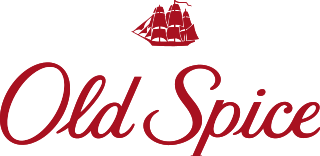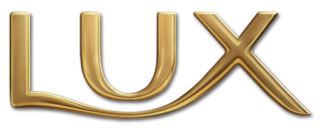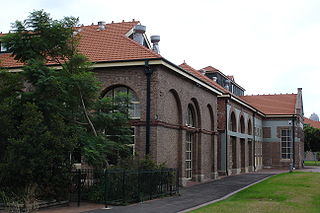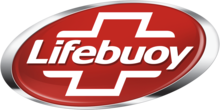Perfume is a mixture of fragrant essential oils or aroma compounds (fragrances), fixatives and solvents, usually in liquid form, used to give the human body, animals, food, objects, and living-spaces an agreeable scent. Perfumes can be defined as substances that emit and diffuse a pleasant and fragrant odor. They consist of manmade mixtures of aromatic chemicals and essential oils. The 1939 Nobel Laureate for Chemistry, Leopold Ružička stated in 1945 that "right from the earliest days of scientific chemistry up to the present time, perfumes have substantially contributed to the development of organic chemistry as regards methods, systematic classification, and theory."

Antibacterial soap is a soap which contains chemical ingredients that purportedly assist in killing bacteria. The majority of antibacterial soaps contain triclosan, though other chemical additives are also common. The effectiveness of products branded as being antibacterial has been disputed by some academics as well as the U.S. Food and Drug Administration (FDA).

Old Spice is an American brand of male grooming products encompassing aftershaves, deodorants and antiperspirants, shampoos, body washes, shaving cream, and soaps. It is manufactured by Procter & Gamble.

Rinso is a brand name of laundry soap and detergent marketed by Unilever. The brand was created by Robert Spear Hudson and originally branded Hudson's Soap, which was sold to Lever Brothers of Port Sunlight, England, in 1908. It was introduced in the United States by Lever Brothers Company in 1918.

Vim is the name of a range of household cleaning products originally produced by Lever Brothers. The Vim brand is currently owned by the German multinational company Henkel, while Unilever retains ownership in Canada and Vietnam.

Sunlight is a brand of laundry soap, laundry detergent and dishwashing detergent manufactured and marketed around the world by Unilever, except in the United States and Canada, where it has been owned by Sun Products since 2010.
Brut is a brand name for a line of men's grooming and fragrance products marketed around the world by Unilever - except in the United States, Canada, Mexico, Puerto Rico and Latin America, where it is owned by High Ridge Brands Company; and in Australia, New Zealand and the Pacific Islands, where it is owned by Pharmacare Laboratories.

Rexona is an Australian deodorant and antiperspirant brand owned by British conglomerate Unilever.

LUX is a global brand developed by Unilever.
Fabergé is a brand name that was inspired by the House of Fabergé jewellery firm, which had been founded in 1842 in Russia. The name was used for various personal care products that were manufactured under the direction of Samuel Rubin, and then by George Barrie. The Fabergé company was sold by Barrie in 1984, and was subsequently acquired by Unilever in 1989.

The Lever Brothers Factory was a soap factory in the suburb of Balmain in Sydney, Australia, which operated from 1895 until 1988. It employed many people from the local area and its large industrial buildings were a prominent feature of the landscape. Most of the site was demolished in 1996 to make way for an apartment complex, and only three of the original buildings remain.

Imperial Leather is a brand of soaps, toiletries and healthcare products manufactured by PZ Cussons. The brand originates in Britain and is now available in a number of other countries including Australia, Denmark, Germany, Hong Kong, India, Indonesia, Iran, Ireland, Kenya, Malawi, Malta, Nepal, New Zealand, Pakistan, South Africa, Uganda, the United Arab Emirates and Zambia. The brand is not widely available in the United States but can be obtained via online sales and in some speciality shops.

Camay is an American brand of bar soap owned by Unilever. It was introduced in 1926 by Procter & Gamble and was marketed as a "white, pure soap for women," as many soaps of the time were colored to mask impurities. Camay's slogan for many years was "Camay: the soap for beautiful women." It was later replaced with "For your most beautiful complexion at every age."

Pears Glycerin soap is a British brand of soap first produced and sold in 1807 by Andrew Pears, at a factory just off Oxford Street in London. It was the world's first mass-market translucent soap. Under the stewardship of advertising pioneer Thomas J. Barratt, A. & F. Pears initiated a number of innovations in sales and marketing. English actress and socialite Lillie Langtry was recruited to become the poster-girl for Pears in 1882, and in doing so she became the first celebrity to endorse a commercial product.
Yardley of London is a British personal care brand and one of the oldest firms in the world to specialise in cosmetics, fragrances and related toiletry products. Established in 1770, the company became a major producer of soap and perfumery by the beginning of the 20th century.

Carbolic soap, sometimes referred to as red soap, is a mildly antiseptic soap containing carbolic acid (phenol) and/or cresylic acid (cresol), both of which are phenols derived from either coal tar or petroleum sources.
W. H. Burford and Sons was a soap and candle-making business founded in Adelaide in 1840 by William Henville Burford (1807–1895), an English butcher who arrived in the new colony in 1838. It was one of the earliest soapmakers in Australia, and up to the 1960s when it closed, the oldest. In 1878 he took his two sons Benjamin and William into partnership as W. H. Burford & Sons. Its expansion, accompanied by a number of takeovers, made it the dominant soap manufacturer in South Australia and Western Australia. Its founders were noted public figures in the young city of Adelaide.
George H Dodd was a biochemist who specialised in the study and production of perfumes and pheromones. He died in December 2020.

John Knight was an English businessman and founder of John Knight Soap Works in London, which later became The Royal Primrose Soap Works.


















